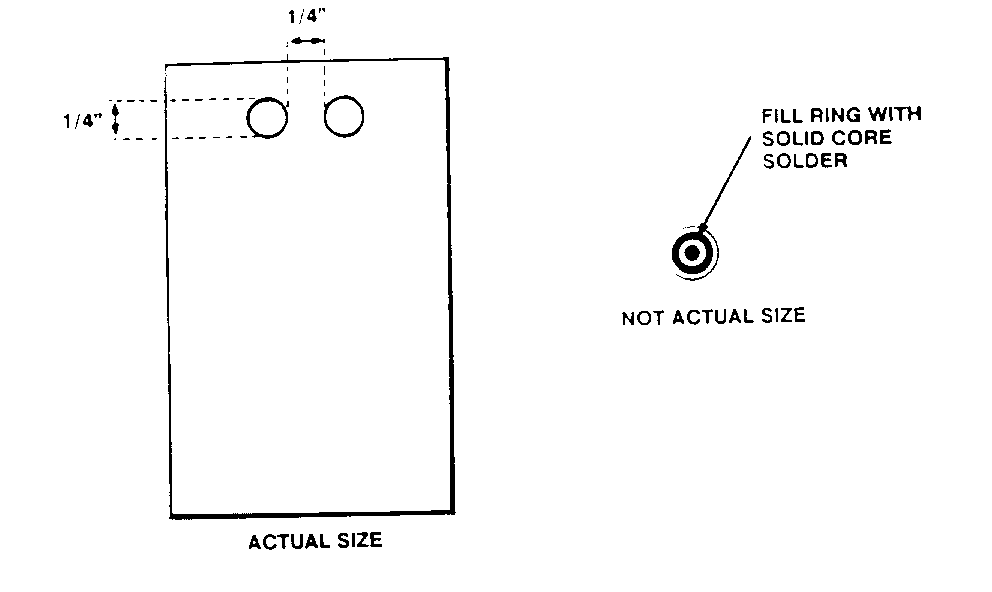REMOTE KEYLESS ENTRY RANGE OPERATION & SYSTEM FEATURES

MODELS/YEARS 1989-90 TORONADO AND TROFEO MODELS
Customers may comment of short-range remote keyless entry operation, intermittent operation, or an inoperative condition.
The short-range or intermittent comments may be caused by an incomplete understanding of the system' s features or comparisons wfth other vehicles which may use d ifferent systems.
An inoperative remote keyless entry function may be diagnosed by referring to Section 9K in the Service Information Manual. For further diagnostic information, refer to Section 8A.
GENERAL INFORMATION:
Remote Keyless Entry is a feature which allows for operation of the door locks, interior lighting, and trunk release from outside the vehicle. It is not intended to replace, but rather should be used in conjunction with, a door lock key. The system could be disabled due to radio frequency interference or low transmitter battery power level. It is, therefore, necessary to always maintain access to a door lock key.
EXPECTED RANGE:
The feature operates from varying distances depending on the direction of approach to the car. At some angles the transmitter operates at 30 feet, but at some angles only 5 feet. The system is not defective if it functions at 5 feet from every angle of the car (i.e., approaching from the rear versus the front, versus driver's door, etc.). The Owner's Manual, which states that the range is 30 feet, is incorrect.
SYSTEM INTERFERENCE:
The Remote Keyless Entry system depends on radio signals to send commands from the transmitter to the receiver. The Toronado system was designed to be selective to prevent locking/unlocking due to other radio transmission sources. Systems that are less selective may exhibit longer range but may experience false locks and unlocks. Even with a selective system, however, it is possible for other radio signals to interfere and prevent Remote Keyless Entry operation. These signals, called radio frequency interference or RFI, may be caused by garage door openers, radar detectors, television, radio, and other signals. Remote Keyless Entry range is improved when not in the presence of other radio signals.
If metal objects separate the transmitter and the antenna, performance is also reduced. To ensure consistent operation always operate the transmitter with a clear view of the vehicle.
In the event that the system only works when the transmitter is held very close (a few inches) from the antenna in the rear window or the receiver:
Check the antenna on the rear window for breaks. Repair the antenna if necessary using the procedure in Section 9K of the Service Information Manual.
Check the coax cable connections at the backlite and at the receiver. If the coax cable is disconnected from the backlite and both snaps are still in place, resnap the connector to the glass. If either of the snaps are not present on the backlite, use the following procedure to replace them. Use service P/N 3634818 to order snaps through GMSPO.
1. Fabricate a template using a metal material as shown in Figure 1.
2. Fill center ring of snap with solid core solder as illustrated in Figure 1.
3. Place the snap in the hole in the template so that the solder is facing upward.
4. Gently pull back the headliner at the center of the rear glass to expose the snap location.
5. Tape the template to the backlite positioning the snap in place.
6. Hold a flat-ended solder gun on the snap for one minute. Take care not to touch the headliner with the solder gun.
7. Remove the template and attach the cable connector to the snaps.
8. Test the remote keyless entry functions.
If both the antenna and the coax connections are intact and the system still exhibits very short range, replace the coax cable.
WARRANTY INFORMATION:
Operation Labor Trouble Operation D Number Time Code
Receiver, Remote Door/Rear Compartment Lock-Replace R4480 0.4 Hour 92
Battery, Remote Door/Rear Compartment Lock Replace R4485 0.2 Hour 92
Transmitter, Remote Door/ Rear Compartment Lock Replace R4490 0.2 Hour 92
Backlite Snap, Remote Door/ Rear Compartment Lock R4492 0.4 Hour 92
Antenna, Remote Door/Rear Compartment Lock R4494 0.4 Hour 92
Parts are currently available from GMSPO.
***************************************************************************** *STG DISCLAIMER*
"THE TEMPLATE DISPLAYED IN THIS SERVICE PUBLICATION IS NOT INTENDED FOR USE" (Please refer to the actual publication for an accurate "TEMPLATE" to use in this service procedure.) *****************************************************************************

General Motors bulletins are intended for use by professional technicians, not a "do-it-yourselfer". They are written to inform those technicians of conditions that may occur on some vehicles, or to provide information that could assist in the proper service of a vehicle. Properly trained technicians have the equipment, tools, safety instructions and know-how to do a job properly and safely. If a condition is described, do not assume that the bulletin applies to your vehicle, or that your vehicle will have that condition. See a General Motors dealer servicing your brand of General Motors vehicle for information on whether your vehicle may benefit from the information.
